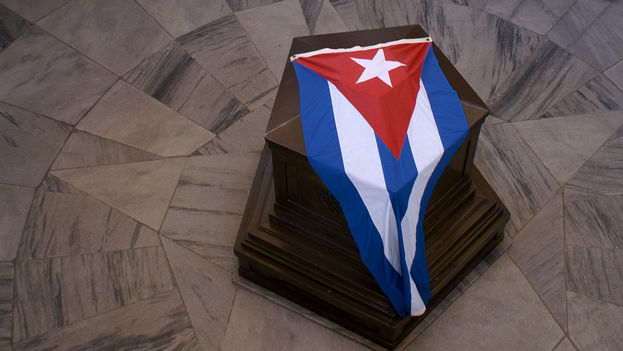
![]() 14ymedio, Pedro Campos, Miami, 3 December 2016 – Genius and figure to the grave, the boy born in Birán, who led an armed Revolution from the Sierra Maestra and governed Cuba for almost 60 years from Havana, wanted his ashes placed for eternity in Santiago de Cuba, near to the tomb of José Martí, in the Santa Ifigenia cemetery.
14ymedio, Pedro Campos, Miami, 3 December 2016 – Genius and figure to the grave, the boy born in Birán, who led an armed Revolution from the Sierra Maestra and governed Cuba for almost 60 years from Havana, wanted his ashes placed for eternity in Santiago de Cuba, near to the tomb of José Martí, in the Santa Ifigenia cemetery.
This could become one of the most controversial of all Fidel Castro’s decisions made throughout his life, for a simple reason: When we need equanimity and closeness between all Cubans, this could stimulate more divisions, given that the figure of Martí is ecumenical, while that of Fidel is divisive and, for many, a figure of conflict.
The location of the remains of the former president near to those of Martí is already being taken as a provocation by an important share of Cubans, and it is possible that some may not rest until they see them well away from those of Martí.
There are sad precedents in our history. Suffice it to recall the consequences of an alleged desecration of the tomb* of Don Gonzalo de Castañón in colonial times or disturbances during the armed and outrageous attack during the reception of the ashes of Mella in the Republic in 1933. Those events generated great confrontation among Cubans and left enduring marks.
The choice of this place, in addition to being controversial, will demand an enormous security effort and a substantial cost in resources and measures to guarantee the protection of the ashes. Given the foreseeable threats, a broad deployment of surveillance may be necessary, with a great number of professionals and technically sophisticated measures, because the ways in which people will attempt to remove the remains from there could be wide-ranging.
The personal security of Fidel Castro does not rest with his death. To avoid future complications, it might be suggested to the government of his brother that his remains rest only a few days in Santa Ifigena and then be taken to a less controversial place, where they can be honored by his admirers without causing litigation as, for example, the Sierra Maestra, symbol of the struggle, perhaps on Pico Turquino itself, the highest peak in Cuba, where there is a bust of Martí placed by Celia Sanchez, the unforgettable combatant close to Fidel.
Something like the general president thought of for himself, on the 2nd Front.
That might be a wise decision by Raul Castro’s government and an important contribution to the future reunification and peace of the Cuban homeland, for which Martí will always be the Apostle, founder of the nation, and shelter of all its children, while Fidel Castro is considered only by his followers as the most distinguished of his successors.
*Translator’s note: In 1871 eight medical students were executed after having been purposely but falsely accused of desecrating the tomb of this Spanish journalist.
